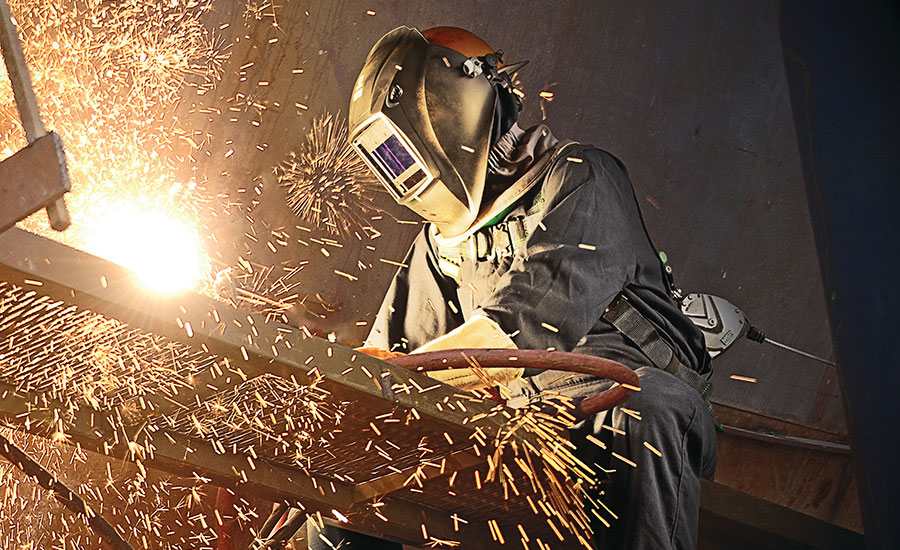Welding WPS Explained: Secret Components and Perks for Your Welding Processes
Welding WPS Explained: Secret Components and Perks for Your Welding Processes
Blog Article
The Ultimate Overview to Welding WPS Procedures: A Thorough Overview for Welders
In the elaborate world of welding, Welding Treatment Specs (WPS) offer as the backbone of ensuring high quality, uniformity, and safety in welding procedures. Recognizing the nuances of creating, executing, and monitoring WPS treatments is crucial for welders looking to raise their craft and satisfy industry criteria. As we look into the numerous parts of a WPS and check out the ins and outs of qualification and certification, we will discover the important role these treatments play in the world of welding. Allow's begin on a journey to untangle the intricacies and significance of WPS treatments in welding practices.
Relevance of WPS Procedures
Comprehending the importance of Welding Procedure Requirements (WPS) procedures is vital for making sure the quality and integrity of bonded frameworks. WPS treatments act as a roadmap for welders, laying out the needed steps, specifications, and products required to achieve an audio weld. By sticking to WPS guidelines, welders can guarantee consistency in their job, causing trusted and structurally sound welds.
One of the main reasons why WPS procedures are crucial is their duty in maintaining weld top quality and stability. Complying with the defined welding specifications and methods outlined in the WPS assists stop flaws such as porosity, breaking, or incomplete fusion, which can compromise the strength and toughness of the weld.

Components of a WPS
A Welding Procedure Requirements (WPS) generally comprises crucial parts that information the details needs for executing a weld, guaranteeing consistency and top quality in the welding procedure. The vital elements of a WPS consist of crucial variables such as base metals, filler steels, interpass and preheat temperature levels, welding procedures, shielding gases, welding settings, and post-weld heat treatment needs.
Base steels describe the products being signed up with, while filler metals are utilized to load the gap in between the base metals throughout welding. Preheat and interpass temperature levels are crucial for regulating the warm input and preventing concerns like breaking or distortion. The welding process outlines the specific strategy to be made use of, whether it's gas steel arc welding (GMAW), secured steel arc welding (SMAW), or one more method. Shielding gases protect the weld swimming pool from atmospheric contamination. Welding settings specify the orientations in which welding can be carried out. Post-weld heat therapy may be necessary to ease anxieties and improve the weld's buildings. An extensive understanding of these elements is essential for developing a comprehensive and effective WPS.

Credentials and Qualification
Having developed the necessary elements of a Welding Treatment Requirements (WPS), the focus currently changes in the direction of the essential facets of credentials and qualification in welding practices.

Accreditation, on the other hand, is the official acknowledgment of a welder's credentials by a relevant qualification body or company. Welding certifications are usually based on the details welding procedures, products, and placements a welder is qualified to function with. Holding a valid welding certification shows that a welder fulfills industry standards and is skilled to carry out welding jobs to the called for specifications.
Producing a WPS
To develop a Welding Treatment Specification (WPS) that satisfies industry requirements, cautious consideration of welding procedures, materials, and operational criteria is crucial. The initial step in creating a WPS is to determine the welding process to be used, such as gas metal arc welding (GMAW) or shielded steel arc welding (SMAW)

Implementing and Keeping An Eye On WPS
Upon wrapping up the extensive Welding Treatment Spec (WPS) that meticulously information welding procedures, materials, functional specifications, and quality control steps, the emphasis moves to effectively implementing and monitoring the recognized procedures. Implementation includes ensuring that all welders entailed in the project know read with the WPS and follow it thoroughly throughout the welding procedure. This requires offering adequate training and guidance to ensure adherence to the defined procedures. Keeping track of the WPS involves constant oversight to confirm that welding activities align with the recorded requirements. Inspections, screening, and top quality control actions are essential parts of the monitoring procedure to recognize any issues or deviations without delay. Normal audits and evaluations of the welding procedures aid in maintaining uniformity and high quality throughout the project. Reliable implementation and monitoring of the WPS are vital for ensuring the honesty, strength, and safety of the welded joints, inevitably adding to the general success of the welding job.
Conclusion
To conclude, understanding and adhering to Welding Treatment Specs (WPS) is vital for welders to guarantee top quality, consistency, and safety in their work. By understanding the components of a WPS, obtaining appropriate qualifications and qualifications, creating in-depth procedures, and executing and checking them effectively, welders can improve their skills and proficiency in welding methods. Following WPS procedures is crucial for producing premium welds and meeting market requirements.
In the complex world of welding, Welding Procedure Requirements (WPS) serve as the foundation of making sure quality, uniformity, and security in welding procedures. The welding procedure describes the details technique to be used, whether it's gas metal arc welding (GMAW), shielded metal arc welding (SMAW), or another method.To develop a Welding Treatment Specification (WPS) that meets sector criteria, cautious factor to consider of welding procedures, materials, and functional specifications is essential. The initial action in producing a WPS is to recognize the welding process to be utilized, such as gas steel arc welding (GMAW) or Recommended Reading secured metal arc welding (SMAW)Upon wrapping up the extensive Welding Treatment Requirements (WPS) that meticulously details welding processes, materials, functional criteria, and high quality guarantee steps, the emphasis changes to properly applying and checking the well-known treatments.
Report this page